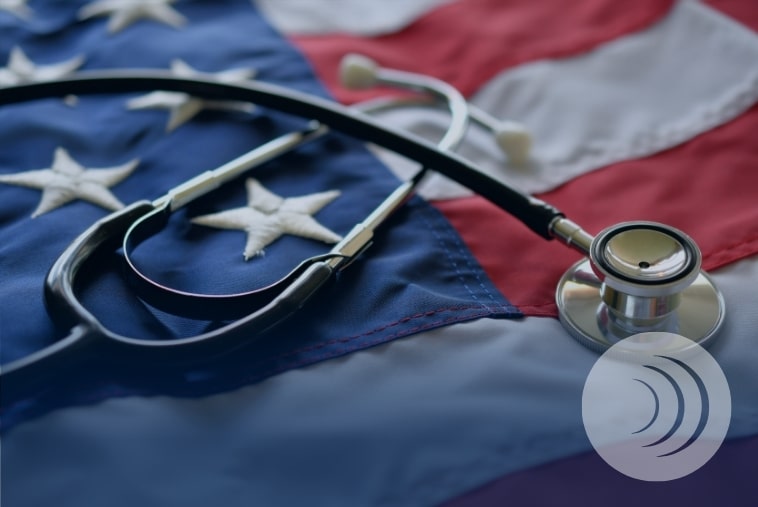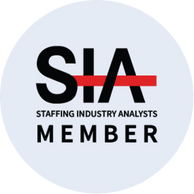Managing multiple medical licenses can be overwhelming, as each state imposes its own unique requirements and potential delays. This complexity often creates a major obstacle for physicians and advanced practice providers looking to practice across state lines or offer telehealth services.
Fortunately, there is a faster and more efficient way to streamline the licensure process and practice in multiple states.
Enter the Interstate Medical Licensure Compact (IMLC), a game-changer for physicians and clinicians wanting to cut through the red tape. Let’s dive into how you can use the IMLC to expand your career opportunities.
Expanding Your Reach: How the IMLC Simplifies Multi-State Licensing
Established in 2014, the IMLC offers an expedited path to licensure in participating states by using verified information from your State of Principal License (SPL). Your SPL is the state where you already hold an unrestricted medical license and is the foundation for obtaining licenses in additional states. This compact significantly reduces the lengthy and complicated paperwork that would otherwise take months, decreasing the time to as little as seven to ten days.
By speeding up the licensure process, the IMLC enables clinicians like you to reach more patients and provide care in underserved or rural areas where healthcare services are urgently needed. Currently, 42 states, Guam, and the District of Columbia participate in the IMLC, allowing you to expand your practice quickly and efficiently.
Related Post: A Guide to the Nursing Licensure Compact (NLC)
Navigating the IMLC: A Simple Guide to Streamlining Your Application Process
To make the most of the IMLC, follow these steps:
1. Identify Your State of Principal License
The first step is designating your SPL. To do this, you must meet one of the following criteria:
- Your primary residence is in the state.
- At least 25% of your medical practice occurs there.
- You’re employed by an organization located in the state.
- You use the state as your official residence for federal income tax purposes.
2. Submit Your Application
Once your SPL is determined, complete your application through the IMLC’s portal. You’ll need to provide:
- Proof of graduation from an accredited medical school.
- Completion of an ACGME- or AOA-accredited graduate medical education program.
- Completing the USMLE or COMLEX-USA exams in no more than three attempts per part.
- A current or time-unlimited certification from an ABMS or AOABOS board.
- No disciplinary actions, criminal history, or issues with controlled substances.
3. Receive Your Letter of Qualification
Once your SPL verifies your eligibility, you’ll receive a Letter of Qualification confirming that you meet the standards to practice in other compact member states.
4. Apply for Licensure in Other States
After receiving your LOQ, you can apply for licenses in any Compact member state where you wish to practice.
5. Stay in Compliance
Keeping track of renewals and continuing education (CE) requirements across multiple states can be tricky. However, setting up digital reminders and using license-tracking apps will help you stay organized.
Mastering Multi-State License Management
Managing several state licenses at once requires careful planning and organization. Here are some tips to help you stay on top of it all:
Create a Licensing Calendar
Use a calendar app like Google Calendar or Microsoft Outlook to set reminders for license renewal dates and CE deadlines. For example, Texas requires renewal every two years, while Arkansas has an annual renewal cycle. Set alerts 60 to 90 days in advance to avoid any lapses in your licensure.
Use License-Tracking Tools
License-tracking apps such as MedTrainer can make life easier by organizing renewal dates and CE requirements in one place. Additionally, platforms like the AMA’s EdHub offer state-specific licensing rules to help you stay compliant across the board.
Centralize Your Documents
Store all licensure documents, CE certificates, and renewal notices in a secure, cloud-based folder like Google Drive or Dropbox. Organizing these files by state with labeled subfolders ensures easy access and quick retrieval, especially when audits or renewals come around.
Stay Updated on State Requirements
State medical boards frequently update licensure rules, so staying informed is crucial. Sign up for email notifications from each board or check their websites regularly for changes in renewal processes or CE mandates.
Maximizing Career Opportunities with Medical License Reciprocity
Taking advantage of medical license reciprocity through the IMLC can unlock a world of opportunities. By holding multi-state licenses, you can enjoy greater career flexibility and explore locum tenens positions in various settings. Whether you want to work in a busy urban hospital, a quiet rural clinic, or remotely through telehealth, reciprocal licensure allows you to adapt your career to fit your personal and professional goals.
Multi-state licensure also enables you to respond swiftly in times of crisis, such as natural disasters or public health emergencies, when your expertise is needed the most. Plus, with the ability to practice in multiple states, you’ll broaden your skill set, gain valuable experience, and increase your earning potential.
Ready to Take the Next Step?
When you’re ready to take the next step in your career and explore new locum tenens opportunities, talk to us today. We’ll help you make the most of your multi-state licensure and explore new career possibilities.




